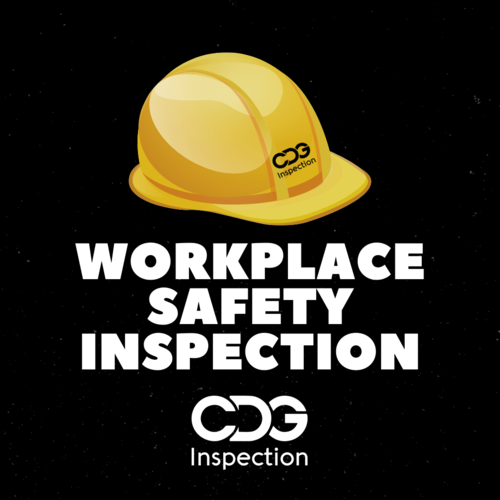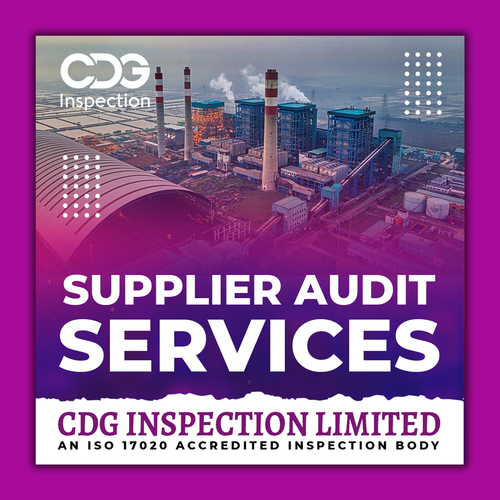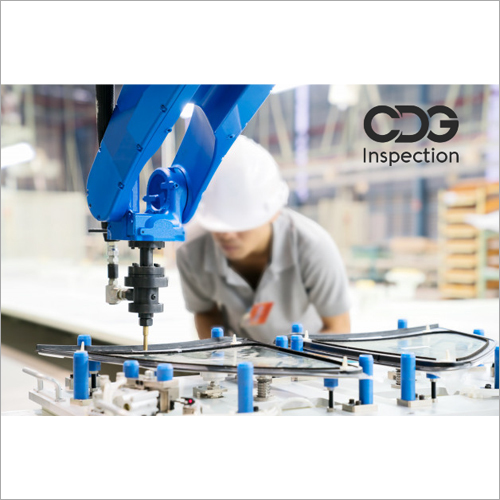Workplace Safety Inspection
Workplace Safety Inspection Trade Information
- Payment Terms
- Cheque
About Workplace Safety Inspection
IMPORTANCE & BENEFITS OF WORKPLACE SAFETY INSPECTION, A very basic and prime responsibility of a safety practitioner is to carry out a site safety inspection. What does workplace inspection mean? A workplace inspection is a process of critically examining the workplace for the identification and mitigation of workplace hazards and to ensure that all standards and procedures are met and the workplace is safe and free from any risks. Workplace inspections are an ongoing process that plays an important role in actively monitoring an organization's safety adherence and compliance to safe work practices. Let us understand first why workplace inspections are important. Workplace inspections help prevent incidents, injuries and illnesses through a critical examination of the workplace. Inspections help to identify and record hazards for corrective action. Health and safety management and safety committees can help plan, conduct, report and monitor site safety inspections. Regular workplace inspections are an important part of the overall occupational health and safety program and management system if it is present. Let us discuss in detail what involves and includes in a workplace safety inspection. The inspection process involves various people such as health and safety specialists, safety practitioners, managers, supervisors and members of the health and safety management committees. Depending upon the type and frequency of inspection, the inspection process mainly focuses on four key areas: Number one: people, workers, their behaviour and matters, Number two: plants, machinery equipment and vehicles. Number three: premises, the workplace itself and the working environment. And number four: procedures, the methodologies, safe systems of work and permit to work system etc. These are the four key elements where the safety inspectors will mainly focus on here. The most important question is what will be the frequency of site safety inspections? The frequency of inspections depends upon the nature of work being done, the materials, substances and equipment involved in the work process and the procedures being followed. Depending on these factors, inspections may be carried out daily, weekly, monthly, by annually. What is the purpose of a site safety inspection? Safety inspections are a very important element of the health and safety management system. Number one: listen to the concerns of workers and their supervisors. Number two: gain further understanding of jobs and tasks at the site. Number three: identify existing and potential hazards. Number four: determine underlying causes of hazards, Number five: recommend corrective action. And number six: monitor steps are taken to eliminate hazards, control the risk for example engineering controls administrative controls, policies procedures and personal protective equipment etc. Without frequent site safety inspections, you will not be able to gain access to such vital points which are directly linked with the progress of the organization. Another important question, how do you plan for site safety inspections? Planning is essential for any task, for any activity if you like to make it effective and successful. What to examine? Once you are at the site and you are conducting a site safety inspection, every safety inspection must examine who, what, where, when and how. Pay particular attention to items that are most likely to develop into unsafe or unhealthy conditions because of stress, fear impact vibration, heat, chemical reaction, Other issues include areas where no work is done, regularly such as parking lots, rest areas of storage areas and locker rooms. All these areas, all these activities, you must examine once you are in the process of site safety inspection. Furthermore, you will look at all workplace elements, the people, the environment, the equipment and the process. The environment includes such hazards as noise, vibration, lighting, temperature and ventilation. Equipment includes materials, tools and operators for producing a product or a service. The process involves how the worker interacts with other elements in a series of tasks of operations.
Product details
| Type Of Service Provider | Workplace Safety Audit Service |
| Mode Of Report | Soft Copy |
| Audit Frequency | One Time Requirement |
| Reason For Audit | any |
| Audit Type | Safety Audit |
Comprehensive Safety Assessment
Workplace Safety Inspections involve a blend of visual checks, documentation review, and physical assessments to identify hazards and evaluate compliance with OSHA, ISO 45001, and local regulations. Inspectors assess key areas including machinery, electricals, fire safety systems, work environments, and emergency exits, ensuring your site meets both legal and safety standards.
Tailored Inspection Process
Clients can customize the inspection scope to fit specific operational needs. The inspection team, usually comprising 1-4 trained professionals, conducts a detailed walkthrough with optional client participation. Advance booking is required to schedule the inspection, which lasts 1-2 days depending on site size and requirements.
Confidentiality and Reporting
All inspections are carried out under strict confidentiality protocols. Upon completion, clients receive both hard and soft copy reports detailing observations, identified hazards, compliance checklists, and recommendations. Certification is granted for sites meeting satisfactory standards.
FAQ's of Workplace Safety Inspection:
Q: How can I book a workplace safety inspection?
A: Inspections must be scheduled in advance. Simply contact us with your requirements and preferred dates to reserve a slot for our professional safety consultants to visit your location.Q: What areas are covered during the inspection?
A: Our inspections encompass machinery, electrical systems, fire safety equipment, general work environment, and emergency exits, ensuring compliance with both international and local safety standards.Q: Can the inspection scope be tailored for specific sites or requirements?
A: Yes, we offer scope customization based on client needs. Consult with our team prior to the inspection to define targeted assessment areas or address unique operational concerns.Q: Who conducts the inspection and what is the usual team size?
A: A team of 1 to 4 experienced safety inspectors will carry out the assessment, depending on the project size and complexity. Each member is a certified professional or safety consultant.Q: How is confidentiality maintained throughout the inspection process?
A: All information gathered during the inspection is managed with the strictest confidentiality, including findings and client communications, and is only shared with authorized recipients.Q: When and how will the inspection report and certification be issued?
A: Reports and certifications are provided in hard and soft copy formats after the inspection is satisfactorily completed, usually within a few working days.Q: What benefits does a workplace safety inspection offer?
A: Regular inspections help identify hazards, ensure regulatory compliance, and reduce accident risks. Clients also receive expert recommendations, compliance checklists, and guidance on hazard rectification and training for continued improvement.

Price:
- 50
- 100
- 200
- 250
- 500
- 1000+

 Send Inquiry
Send Inquiry






 Send Inquiry
Send Inquiry Send SMS
Send SMS Call Me Free
Call Me Free